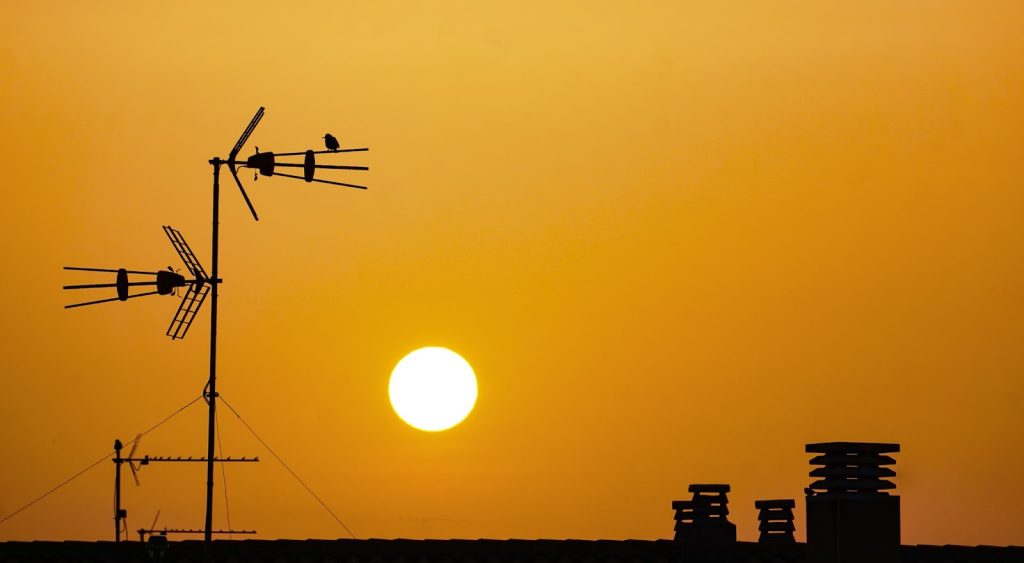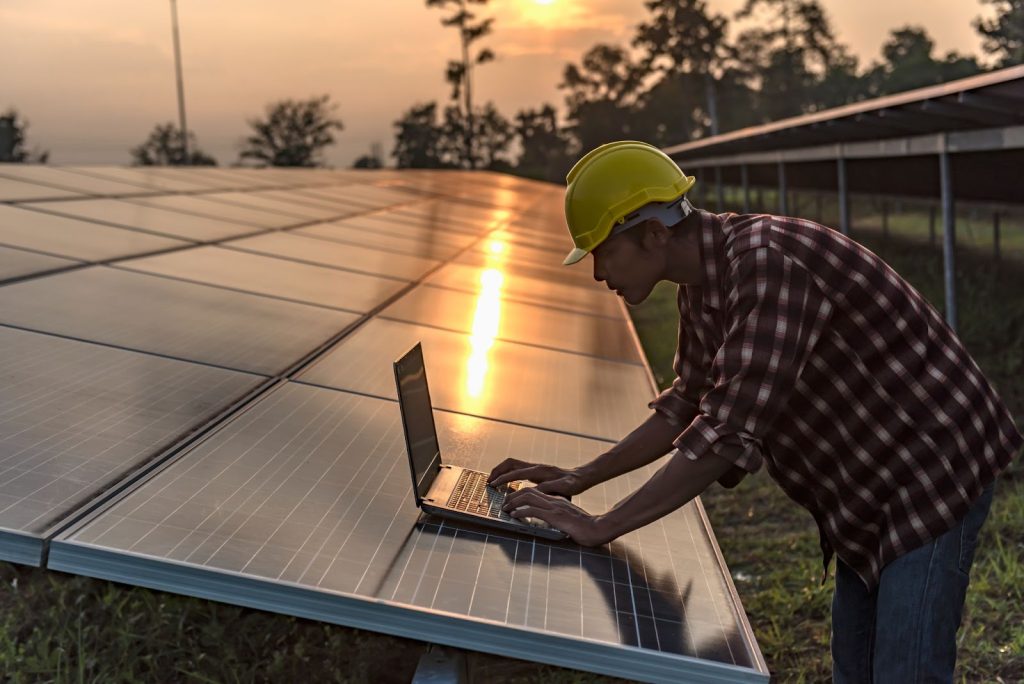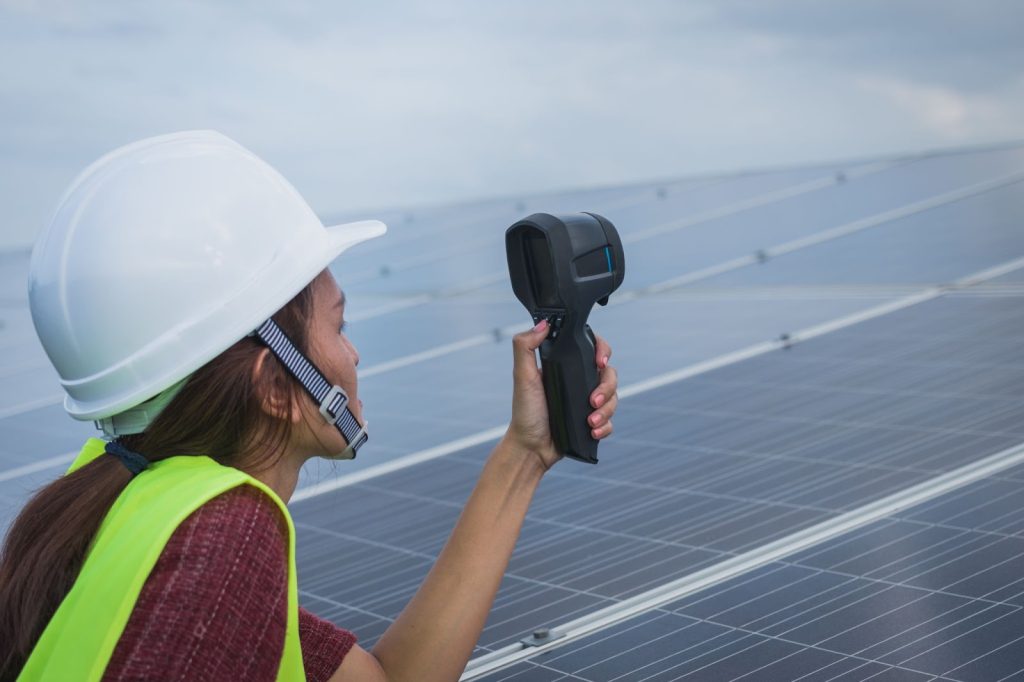What Is Solar Irradiance and How Does It Shape Effective Solar Energy Planning
Key Highlights:
- Solar Irradiance Defined: Measures the solar power received per unit area (W/m²) — a critical factor in solar energy generation and planning.
- India’s Solar Landscape: High irradiance in states like Rajasthan and Gujarat; lower levels in the Northeast due to cloud cover.
- Three Key Types:
– Direct: Unscattered sunlight, vital for CSP systems.
– Diffuse: Scattered sunlight keeps PV systems productive on cloudy days.
– Global: Combined value, used in most solar energy assessments. - Why It Matters: Irradiance impacts panel placement, performance prediction, and system ROI.
- Measuring Tools: Pyranometers, pyrheliometers, and satellite data help in accurate site assessment.
- Advanced Applications: Mobile solar panels and vertical bifacial systems are expanding how and where solar can be deployed.
- Mapping Potential: Solar irradiance maps and platforms like Solargis help developers, policymakers, and investors identify high-yield zones.
- Irradiance vs Insolation: Instant power vs. total energy — understanding both is essential for accurate planning.
- Maximising Performance: Optimal tilt angles, cooler panel environments, and smart orientation increase system efficiency.

Solar irradiance refers to the power per unit area received from the Sun as electromagnetic radiation. It is typically measured in watts per square meter (W/m²). This seemingly simple concept plays a foundational role in solar energy planning. The amount of solar irradiance directly affects the energy output of photovoltaic (PV) panels and thus influences decisions regarding system design, panel placement, and cost-efficiency of solar projects.
Understanding solar irradiance is crucial for anyone involved in renewable energy, from engineers and environmental planners to investors and government officials.
Solar Irradiance Variability in India

India, due to its diverse geography and climate, experiences significant variation in solar irradiance:
- High-Irradiance Regions: States like Rajasthan, Gujarat, and parts of Andhra Pradesh receive some of the highest solar irradiance in the country, often exceeding 5.5–6.0 kWh/m²/day. The Thar Desert, in particular, is a hotspot for solar farms.
- Low-Irradiance Regions: Northeastern states such as Meghalaya and Arunachal Pradesh often experience heavy cloud cover and rainfall, reducing their irradiance levels and making large-scale solar deployments more challenging.
This variability necessitates region-specific planning for solar projects, ensuring that investments are both sustainable and profitable.
Not All Sunlight Is the Same: Types of Solar Irradiance You Should Know
To effectively design solar systems, one must understand the three main components of solar irradiance:
1. Direct Solar Irradiance – Straight from the Source
This is the portion of sunlight that reaches the Earth’s surface without scattering. It’s most intense on clear, sunny days and is especially important for Concentrated Solar Power (CSP) systems that rely on focused beams of sunlight.
2. Diffuse Solar Irradiance – Sunlight on Cloudy Days
Even when the sky is overcast, sunlight is scattered by atmospheric particles and still reaches the Earth’s surface. Diffuse irradiance ensures that solar panels continue generating power during less-than-ideal conditions.
3. Global Solar Irradiance – The Full Picture
This is the sum of direct and diffuse irradiance on a horizontal surface. It’s the most commonly used metric in assessing solar potential and is particularly useful in PV system modelling and solar mapping software.
Why Solar Irradiance Matters More Than You Think
1. System Design
Knowledge of irradiance helps determine the number, type, and configuration of panels needed to meet a location’s energy demand efficiently.
2. Performance Prediction
By understanding the irradiance profile of a site, engineers can estimate daily, monthly, and annual energy yields, making it easier to calculate ROI and payback periods.
3. Site Selection
Solar developers use irradiance data to pinpoint locations with the highest potential for solar energy production, balancing factors like accessibility, grid connectivity, and land availability.
Impact of Solar Irradiance on PV Efficiency

A study published in the Renewable Energy journal found that PV system efficiency increases with higher irradiance and wind speeds but decreases with rising ambient temperature and humidity levels. In hotter regions, panel cooling techniques or elevated mounting structures may be used to combat efficiency drops.
This finding emphasises the importance of microclimate data when planning solar installations.
How Do We Measure Solar Irradiance?

Accurate irradiance measurement is key to performance forecasting:
- Pyranometers: Measure global solar irradiance on a flat surface. Widely used in weather stations and solar farms.
- Pyrheliometers: Measure direct beam irradiance. Often mounted on solar trackers.
- Satellite Data: Platforms like NASA’s POWER and ESA’s Copernicus provide irradiance data over large geographical areas, beneficial for preliminary feasibility studies.
Mobile PV Performance Monitoring
In one tropical region study, researchers mounted solar panels on a moving vehicle to test vehicle-integrated photovoltaics (VIPV). The results showed promise for mobile solar applications but also highlighted challenges like partial shading, inconsistent irradiance, and cooling limitations.
Such case studies push the boundaries of traditional solar deployment and open doors to off-grid and emergency-use scenarios.
What’s a Solar Irradiance Map and Why Should You Care?
Solar irradiance maps visually represent how much solar energy different regions receive. These tools help:
- Identify High-Potential Areas: Developers use these maps to prioritise locations with the best solar yield.
- Support Policy Making: Governments rely on irradiance data to design renewable energy targets and subsidies.
- Drive Investment: Maps guide investors toward regions with the highest solar resource reliability.
Solargis Solar Resource Maps
Solargis, a globally recognised platform, offers solar resource assessment tools using high-resolution satellite data. These maps include:
- Global Horizontal Irradiance (GHI)
- Direct Normal Irradiance (DNI)
Solargis data is frequently used in bankable feasibility studies for solar parks, making it indispensable for utility-scale projects.
Irradiance vs Insolation: What’s the Difference?
Although they sound similar, these terms refer to different concepts:
- Irradiance: Instantaneous solar power per square meter (W/m²).
- Insolation: The total energy received over a period of time, usually in kWh/m²/day or per year.
Understanding both metrics helps in accurate modelling and performance projections.
How Solar Irradiance Affects Panel Performance
Several factors influence how solar irradiance affects solar panel output:
- Irradiance Levels: More sunlight = more energy, but only up to the system’s rated capacity.
- Temperature: Panels lose efficiency when temperatures rise above 25°C.
- Angle and Orientation: South-facing panels at optimal tilt angles capture the most sunlight throughout the year.
Vertical Bifacial PV Systems
Recent studies on vertically mounted bifacial panels, which collect light on both sides, show they perform especially well in environments with high diffuse irradiance, such as snowy or foggy regions. These systems also use land more efficiently and are less affected by dust accumulation.
Maximise Your Solar Energy Potential with the Right Data
Leveraging accurate solar irradiance data leads to:
- Better System Design
- Improved Energy Forecasting
- Strategic Investment and Policy Decisions
Data-driven planning reduces project risk and improves long-term sustainability.
Final Thoughts: Solar Irradiance Is the Foundation of a Brighter Future
Whether you’re an engineer designing a rooftop solar system or a policymaker developing a national solar roadmap, understanding solar irradiance is non-negotiable. It’s the first step toward making solar energy more accessible, affordable, and efficient.
For deeper insights, consider enrolling in specialised courses on solar resource assessment, PV system design, and climate-aware solar forecasting.
Sources
https://www.energy.gov/eere/solar/solar-radiation-basics
https://solargis.com/resources/free-maps-and-gis-data
https://iea-pvps.org/key-topics/kpi-pvsystems-2024
https://www.isro.gov.in/ISRO_EN/Atmanirbhar/Solar_Calculator.html
https://data.nrel.gov/submissions/43
https://www.areprl.com/en/solar-resource

